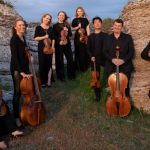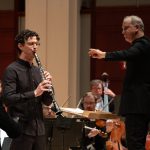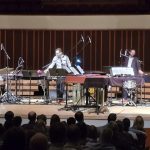Mark Gresham | 22 OCT 2025
When the Civil War ended in 1865, four million formerly enslaved people stepped into freedom carrying something no law could confiscate: song.
The spiritual, born from the trauma and endurance of slavery, became both a memory and a map—a record of suffering, a prayer for deliverance, and a coded language of survival.
Before emancipation, enslaved Africans in the American South had already fused their musical inheritance—call-and-response, syncopated rhythm, and melodic improvisation—with the Christian hymns introduced by missionaries and plantation preachers. Songs like “Steal Away,” “Go Down, Moses,” and “Swing Low, Sweet Chariot” carried double meanings: faith in divine redemption, and sometimes covert messages about the Underground Railroad. Yet these songs were never written down. They existed in voices, in breath, and in the shared pulse of communities that could claim little else as their own.
After the war, the establishment of schools for freedpeople—many founded by Northern missionaries and the Freedmen’s Bureau—became fertile ground for a new flowering of Black culture. The founding of institutions such as Fisk University in 1866, Hampton Institute in 1868, and Tuskegee Institute in 1881 marked more than educational progress; they became incubators for the preservation and transformation of the spiritual.
In this post-war era, higher education and music intertwined. Faculty and students sought to prove that the newly emancipated people were not only capable of learning but of creating culture worthy of the world’s respect. George L. White, the music teacher at Fisk University in Nashville, Tennessee, organized the Fisk Jubilee Singers in 1871. The ensemble of students began touring the United States to raise funds for the struggling school, performing spirituals their parents and grandparents had sung in bondage—arranged and harmonized with dignity and artistry.
Audiences were stunned. Accustomed to minstrel stereotypes and caricatures, many white listeners had never heard African Americans sing in concert settings with such refinement and power. The Fisk Jubilee Singers’ 1872 performance for President Ulysses S. Grant, and their subsequent tours of Great Britain and Europe, not only saved Fisk University financially but also introduced the world to a new sound—one both distinctly American and deeply human.
Their success sparked a movement. Other historically Black colleges, including Hampton Institute in Virginia and Tuskegee Institute in Alabama, formed similar touring choirs, each preserving and reimagining the spiritual in their own way. Through them, the songs left the plantations behind and entered the national consciousness.
As the century turned, a new generation of Black composers sought to elevate the spiritual from oral tradition to concert art. Chief among them was Harry T. Burleigh, a baritone, composer, and arranger who grew up hearing his formerly enslaved grandfather sing spirituals in Erie, Pennsylvania.
In the 1890s, Burleigh won a scholarship to the National Conservatory of Music in New York, where he became a protégé of the Czech composer Antonín Dvořák. It was Burleigh who first introduced Dvořák to the sound of the spiritual—reportedly singing “Go Down, Moses” and “Swing Low, Sweet Chariot” in the conservatory halls. Dvořák, captivated by their melodic depth and rhythmic vitality, declared that these songs contained “the real American music,” influencing his Symphony No. 9 in E minor, “From the New World” (1893).
Burleigh’s own arrangements—such as “Deep River” (1916) and “Sometimes I Feel Like a Motherless Child”—transformed folk songs into art songs for the recital stage. His harmonizations retained the emotional gravity of the originals while placing them within the harmonic language of European classical music. Through Burleigh’s artistry, the spiritual became a concert form, embraced by singers of all races and heard in cathedrals, concert halls, and drawing rooms alike.
By the dawn of the 20th century, the songs that once echoed through hidden gatherings in the South were being studied, arranged, and celebrated. A new generation of scholars and artists—among them the brothers James Weldon Johnson and John Rosamond Johnson—would soon ensure these voices would never be silenced. ■

Read more by Mark Gresham.
RECENT POSTS
 Tine Thing Helseth brings fire and finesse to trumpet concertos by Arutiunian, Penderecki, and Weinberg • 24 Oct 2025
Tine Thing Helseth brings fire and finesse to trumpet concertos by Arutiunian, Penderecki, and Weinberg • 24 Oct 2025 Camerata Nordica Octet brings Scandinavian color and classical clarity to Hodgson Hall • 21 Oct 2025
Camerata Nordica Octet brings Scandinavian color and classical clarity to Hodgson Hall • 21 Oct 2025




.png)